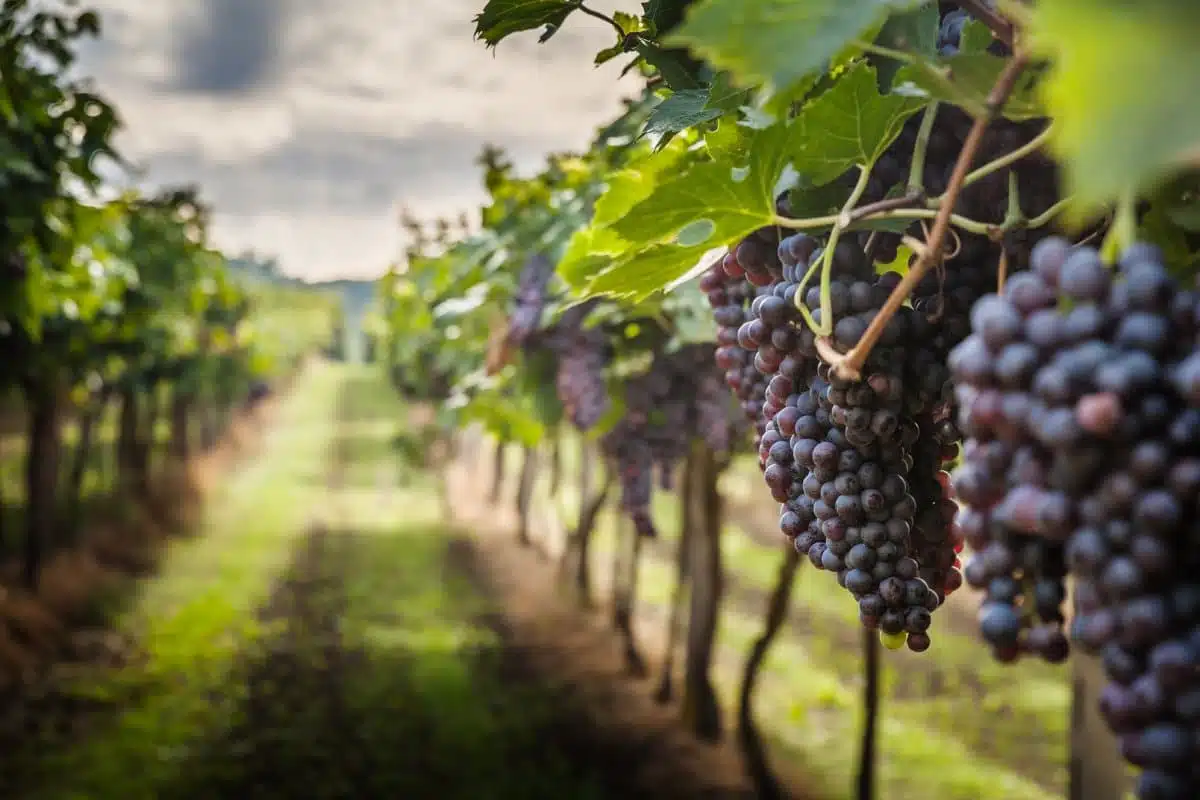As wine tourism evolves and sustainability becomes paramount, vineyards around the world are adopting eco-friendly practices. This guide explores how to indulge in the pleasures of wine while respecting the environment. From organic vineyards to biodynamic winemaking, sustainable wine tours offer a deeper understanding of the intricate relationship between winemaking and the ecosystem.
1. Sonoma County, California

Image Credit: Shutterstock / Billy Carmen
Sonoma County, a jewel in California’s wine country, sets a high standard in sustainable viticulture. With its diverse microclimates and soil types, this region is home to wineries deeply committed to environmental stewardship. Many vineyards here practice organic and biodynamic farming, ensuring their wines are produced with minimal ecological impact. Wineries like Benziger Family Winery offer comprehensive tours that explore their biodynamic processes, providing insights into how they harmonize their farming practices with nature. The experience is enriched by the stunning backdrop of rolling hills and lush vineyards, making Sonoma County a must-visit for any eco-conscious wine enthusiast.
Insider’s Tip
Visit during the harvest season (August to October) for a hands-on experience in sustainable harvesting techniques.
When to Travel
Late summer to early fall is ideal for witnessing the grape harvest.
How to Get There
Sonoma County is about an hour’s drive from San Francisco, making it an easy day trip or weekend getaway.
2. Tuscany, Italy
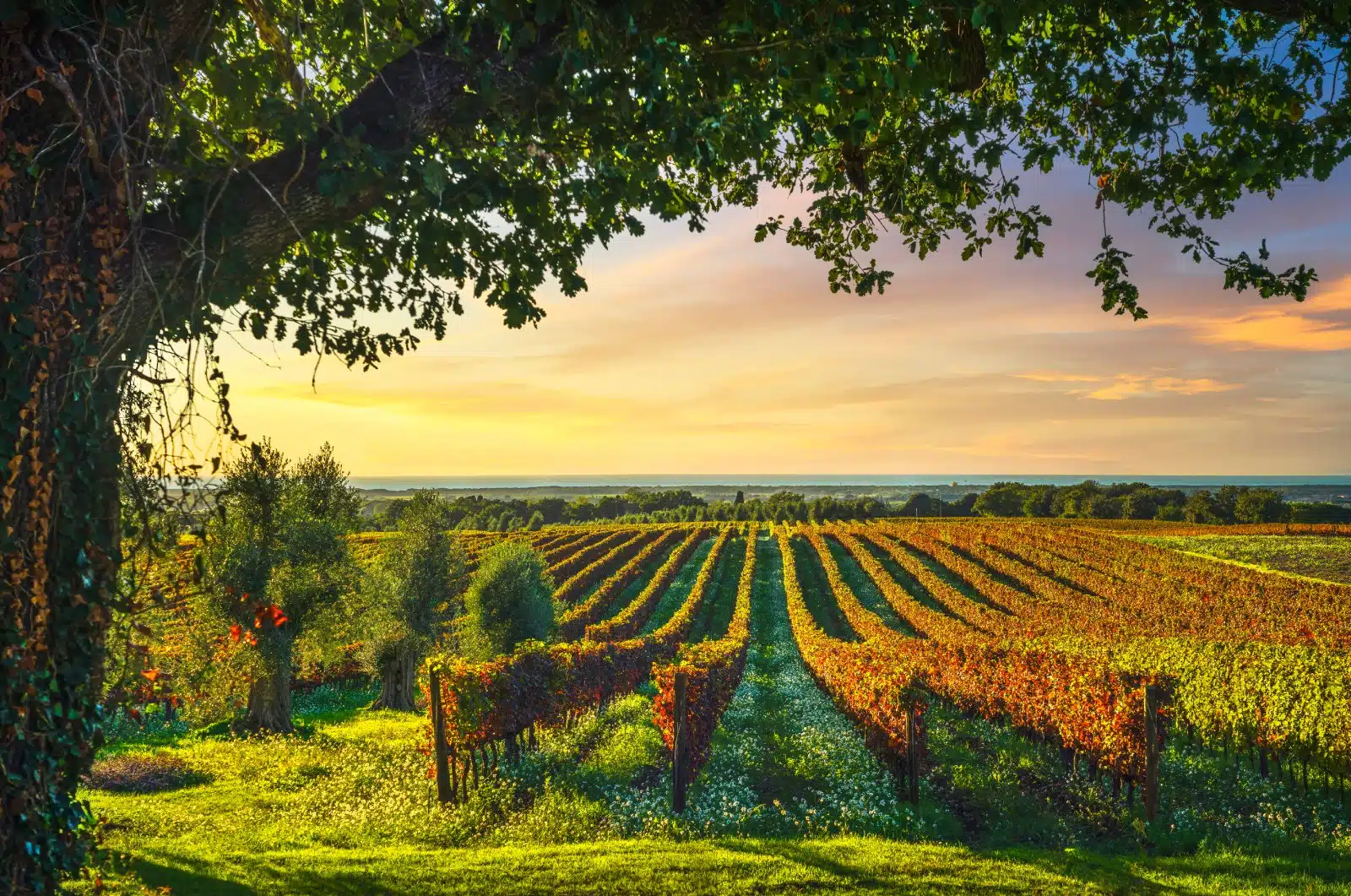
Image Credit: Shutterstock / StevanZZ
In the heart of Italy, Tuscany is a region where the art of winemaking intertwines with a strong commitment to sustainability. The picturesque Tuscan landscape, with its rolling hills and historic vineyards, is home to wineries that have embraced organic and biodynamic practices without compromising their deep-rooted winemaking traditions. A tour through Tuscany’s vineyards, such as the esteemed Querciabella in Chianti, is where ancient techniques meet modern sustainable practices. Visitors can explore the historic estates, taste exquisite wines, and learn about the wineries’ dedication to preserving the environment. The experience is complemented by the region’s rich culinary heritage, offering a chance to pair world-class wines with local organic produce.
Insider’s Tip
Engage in a cooking class at a vineyard to learn about pairing local organic produce with wines.
When to Travel
Spring (April to June) offers pleasant weather and fewer tourists.
How to Get There
Fly into Florence or Pisa, rent a car, or join a guided tour to explore the Tuscan countryside.
3. Marlborough, New Zealand
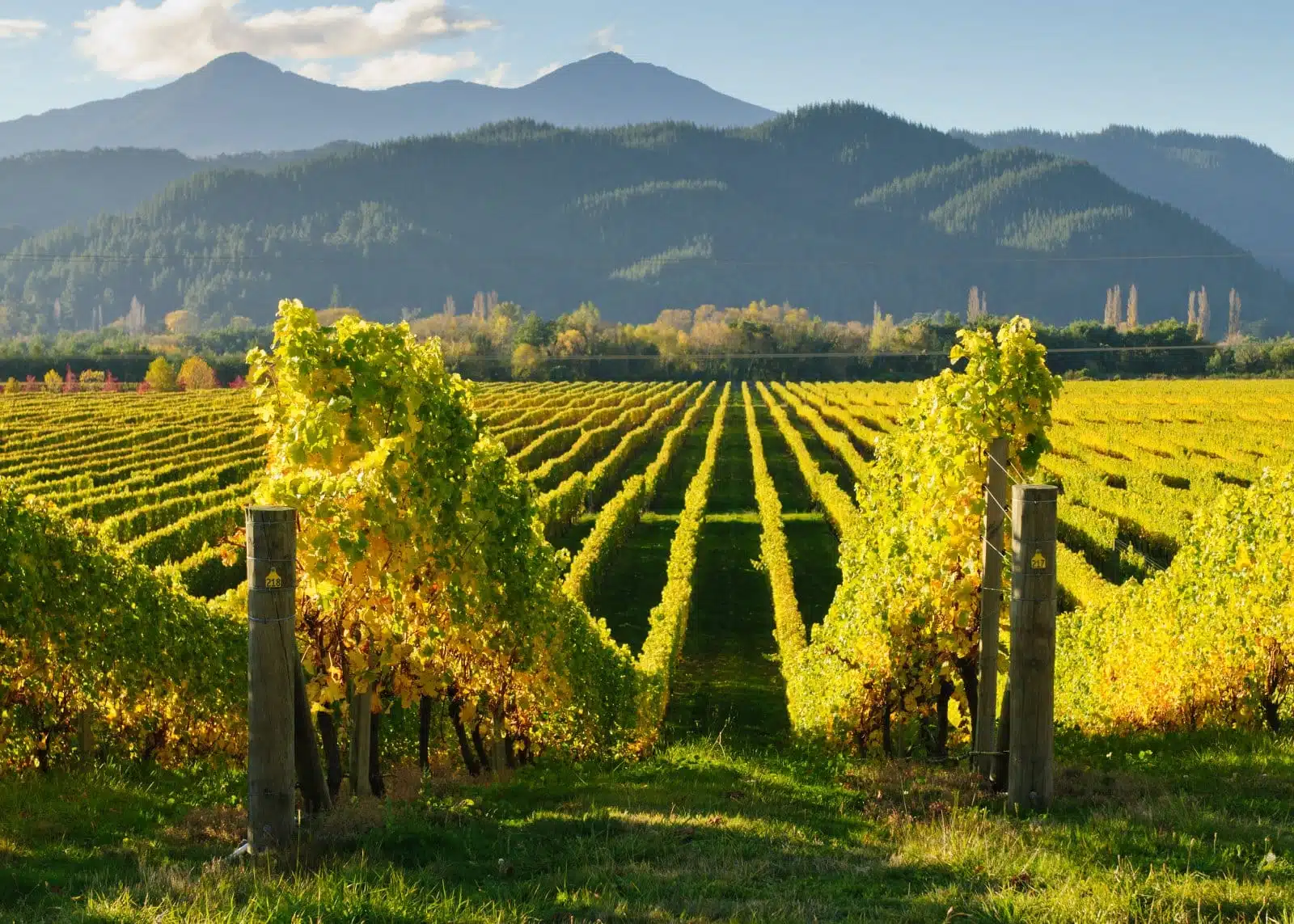
Image Credit: Shutterstock / Jeffrey B. Banke
Marlborough, situated at the northeastern tip of New Zealand’s South Island, is a region that has gained international acclaim for its Sauvignon Blanc. Here, wineries are at the forefront of sustainable viticulture, implementing practices that conserve water, reduce carbon emissions, and promote biodiversity. A wine tour in Marlborough offers more than just tastings of its celebrated wines; it’s an opportunity to witness innovative practices shaping the future of sustainable winemaking. Visitors can explore the vineyards, often set against majestic mountains and clear blue skies, and learn about the wineries’ efforts to protect and nurture the land.
Insider’s Tip
Take a bike tour of the vineyards for a low-impact way to explore the region.
When to Travel
Visit during the harvest season (March to April) for the most vibrant vineyard experience.
How to Get There
Marlborough is accessible via a short flight from Wellington or Christchurch to Blenheim.
4. Bordeaux, France

Image Credit: Shutterstock / fogcatcher
Bordeaux, synonymous with fine wine, is a region where tradition and sustainability go hand in hand. The vineyards of Bordeaux, stretching across picturesque landscapes, are increasingly adopting organic and biodynamic methods. This shift towards sustainable practices is evident in the grand châteaux and smaller family-owned estates. A wine tour in Bordeaux is an elegant affair, offering tastings of some of the world’s most sought-after wines while showcasing the winemakers’ commitment to preserving their terroir. Visitors can explore the historic estates, learn about the region’s winemaking heritage, and discover how today’s Bordeaux embraces a more sustainable future.
Insider’s Tip
Visit smaller, family-owned vineyards for a more intimate look at sustainable winemaking.
When to Travel
Late spring to early fall is the best time to visit, with harvest season in September.
How to Get There
Bordeaux is easily accessible by train or plane from major cities in France and Europe.
5. Mendoza, Argentina
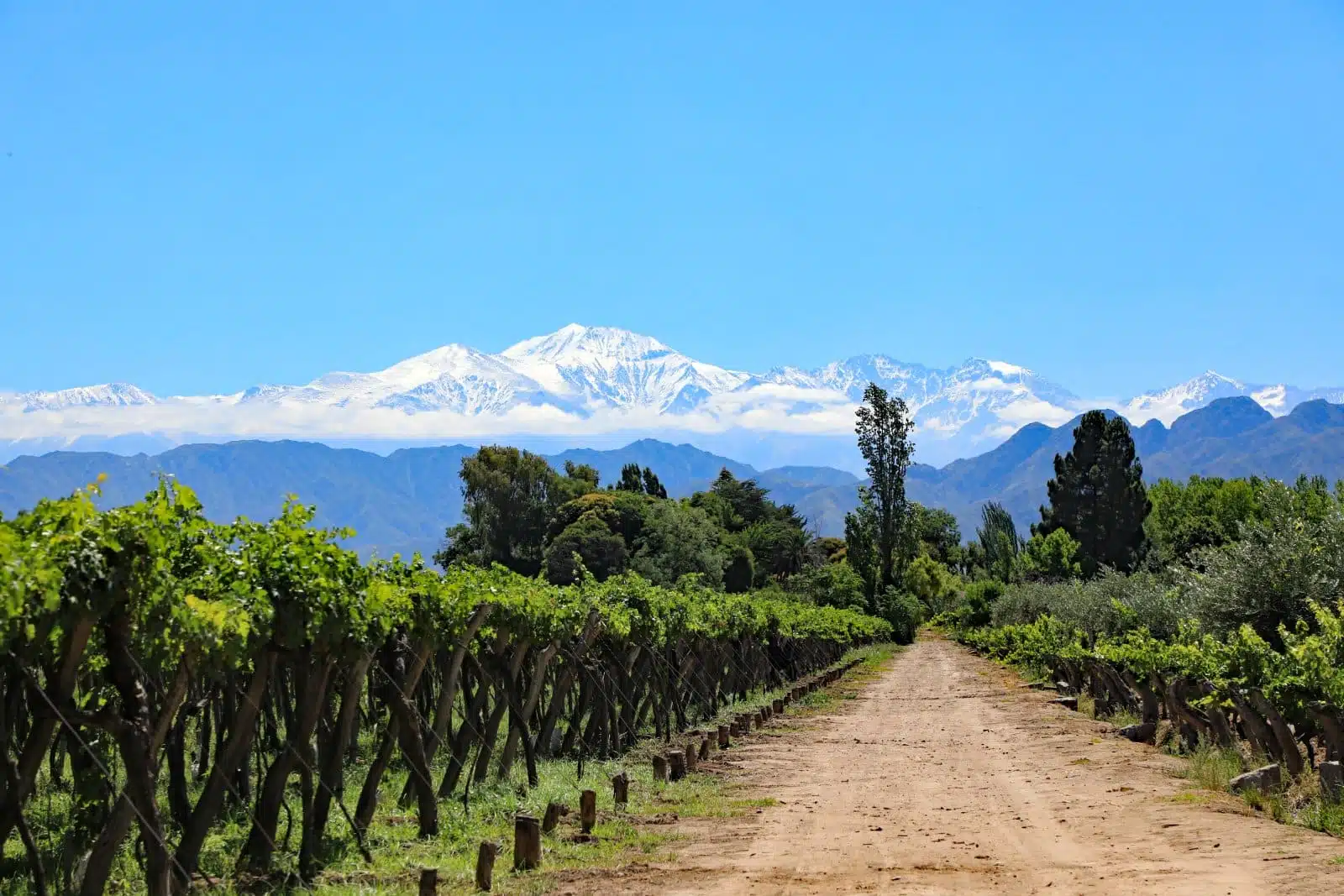
Image Credit: Shutterstock / Thomas Barrat
Mendoza, nestled in the foothills of the Andes mountains, is Argentina’s most renowned wine region, famous for its Malbec. The wineries in Mendoza produce high-quality wines and are leaders in sustainable viticulture. The unique high-altitude environment presents challenges and opportunities for winemakers, who employ innovative techniques to cultivate their vineyards with minimal environmental impact. Wine tours in Mendoza often include horseback riding through the vineyards, tasting the region’s signature wines, and insights into the sustainable practices that make this region unique.
Insider’s Tip
Combine your wine tour with a visit to the Andes for a complete Mendoza experience.
When to Travel
March to May (fall in the Southern Hemisphere) is ideal for pleasant weather and autumnal vineyard colors.
How to Get There
Fly into Mendoza from Buenos Aires or Santiago, Chile.
6. Willamette Valley, Oregon
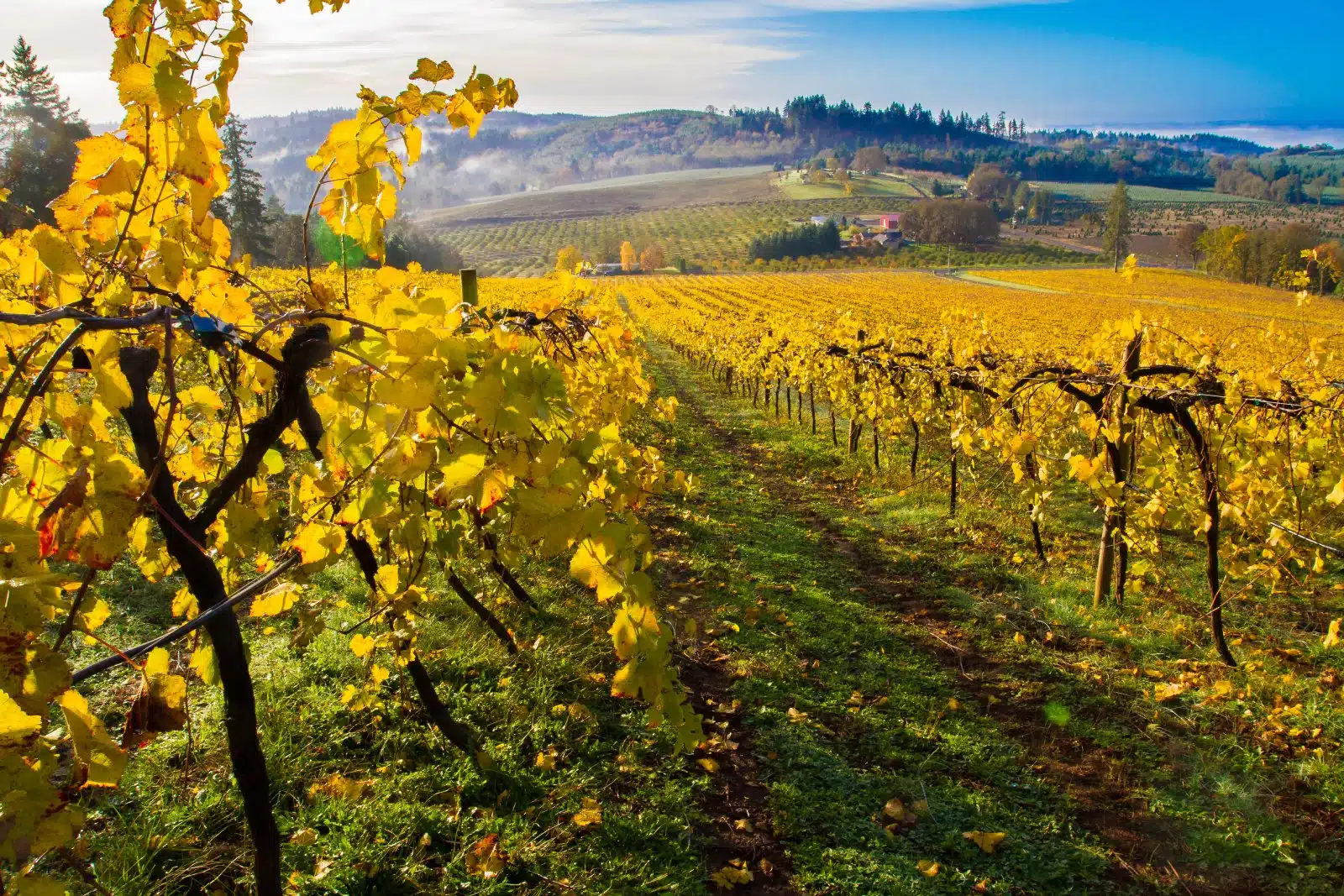
Image Credit: Shutterstock / Bob Pool
The Willamette Valley, Oregon’s premier wine region, is evidence of sustainable viticulture in the United States. Known for its exceptional Pinot Noir, the valley’s wineries are deeply committed to preserving their land’s natural beauty and integrity. Many vineyards in the region are certified by LIVE (Low Input Viticulture and Enology), ensuring their wines are produced with a minimal ecological footprint. A visit to the Willamette Valley offers a tasting of its renowned wines and an insight into the eco-conscious ethos that pervades the region’s winemaking practices.
Insider’s Tip
Participate in a blending workshop to understand the nuances of sustainable winemaking.
When to Travel
Late spring through early fall offers the best weather for vineyard tours.
How to Get There
Willamette Valley is about an hour’s drive from Portland, Oregon.
7. Douro Valley, Portugal
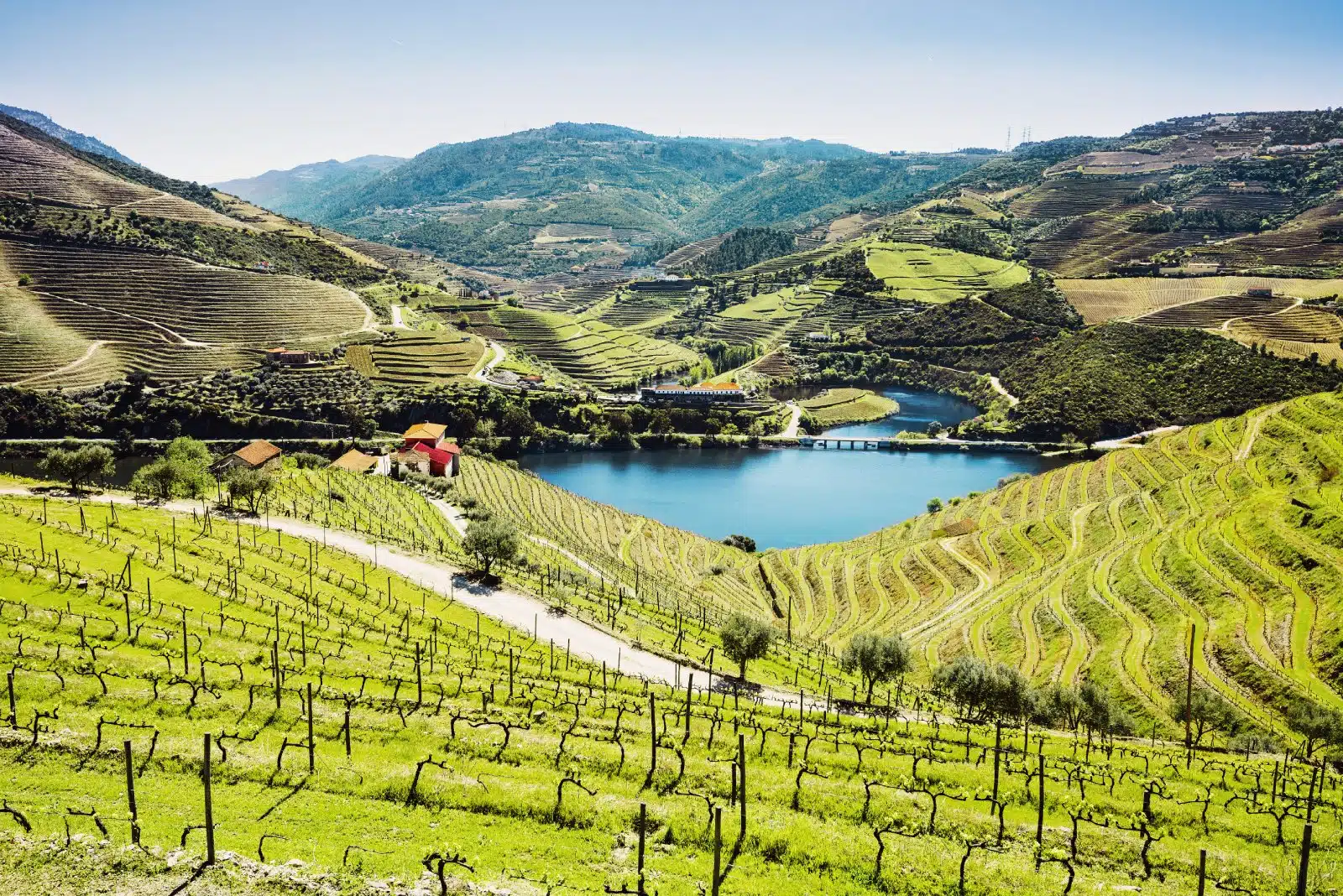
Image Credit: Shutterstock / Kite_rin
The Douro Valley, a UNESCO World Heritage Site, is renowned for its Port wine and its commitment to sustainable viticulture. The region’s steep, terraced vineyards along the Douro River highlight the resilience and innovation of its winemakers. Many estates in the Douro Valley have embraced organic and sustainable practices, balancing the demands of modern winemaking with a deep respect for the land. A wine tour in this region is a journey through a landscape shaped by centuries of wine production, now guided by sustainability principles.
Insider’s Tip
Visit in September or October to witness the traditional grape stomping.
When to Travel
Spring and fall are ideal for comfortable temperatures and fewer tourists.
How to Get There
The Douro Valley is a 2-hour drive from Porto, Portugal.
8. Stellenbosch, South Africa
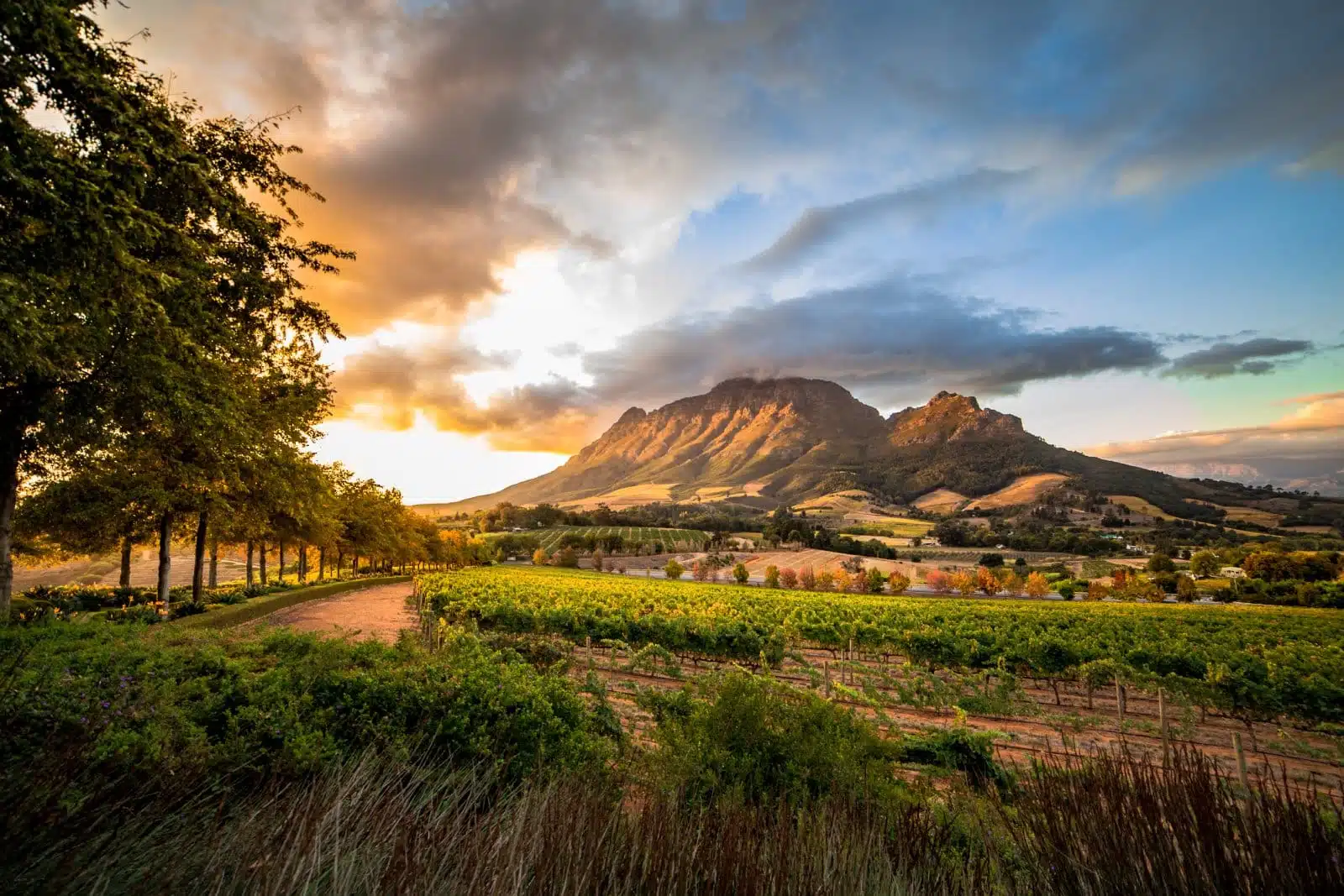
Image Credit: Shutterstock / ModernNomad
Stellenbosch, in the heart of South Africa’s wine country, is a region where preserving biodiversity is as important as producing wine. Many vineyards here are part of the Biodiversity & Wine Initiative, which aims to protect the unique flora and fauna of the Western Cape while producing world-class wines. A visit to Stellenbosch is a chance to taste some of South Africa’s finest wines and an opportunity to see firsthand how sustainable practices can enhance both the wine and the environment.
Insider’s Tip
Try wines from vineyards that use indigenous yeasts for a true taste of South African terroir.
When to Travel
Visit during the harvest season, from February to April, for the liveliest vineyard experience.
How to Get There
Stellenbosch is about a 30-minute drive from Cape Town.
9. Penedès, Spain
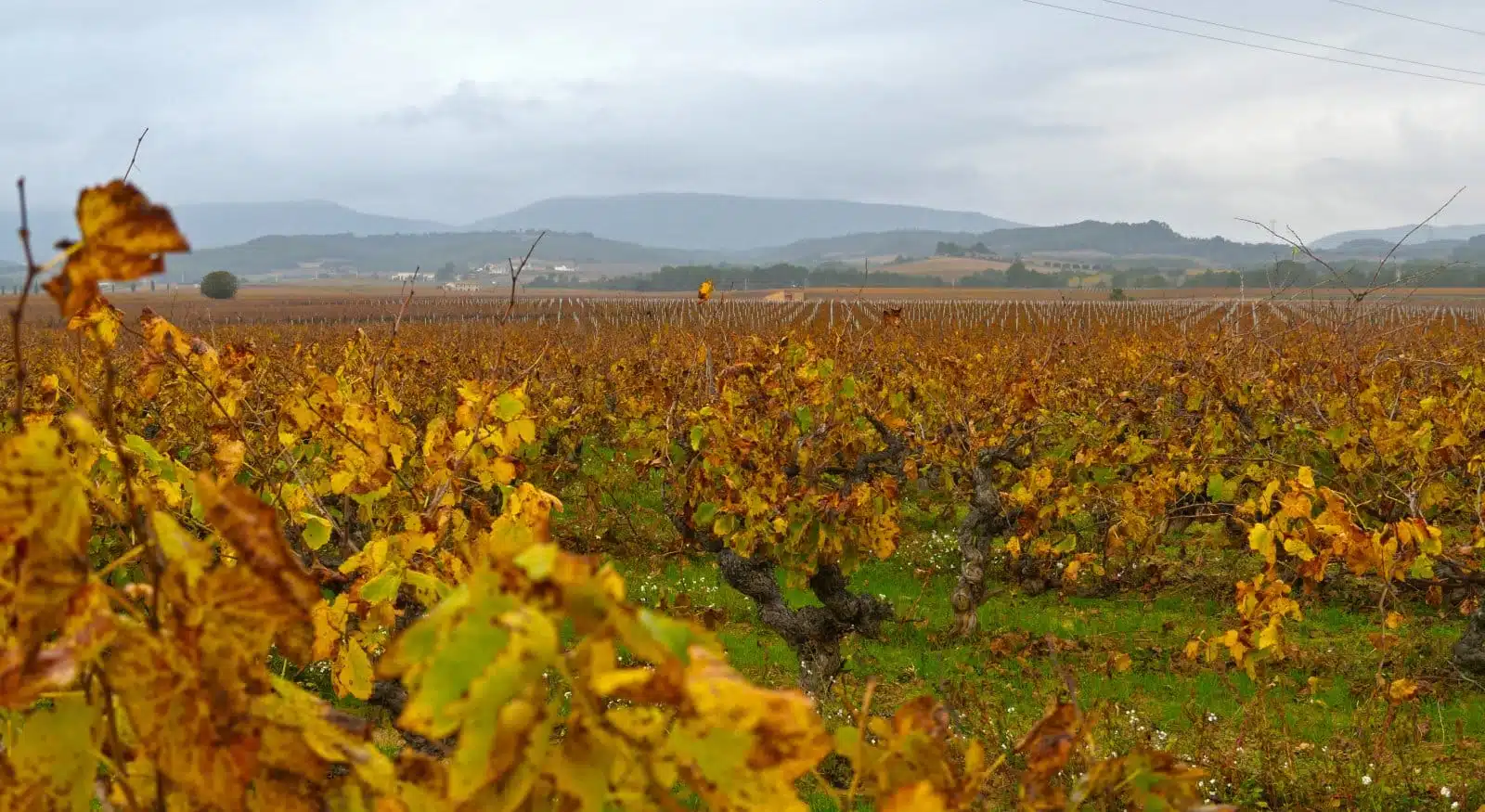
Image Credit: Shutterstock / M. Vinuesa
Penedès, nestled in the heart of Catalonia, Spain, is a wine region celebrated for its Cava and a growing commitment to sustainable winemaking. The diverse microclimates of Penedès allow for a wide variety of wine styles, all produced with a focus on environmental responsibility. Wine tours in Penedès often include visits to family-run wineries, combining traditional methods with modern sustainable practices. The experience is enriched by the region’s stunning landscapes and rich cultural heritage, making Penedès a must-visit for those interested in eco-friendly wine production.
Insider’s Tip
Combine your wine tour with a visit to nearby Montserrat for breathtaking views and cultural experiences.
When to Travel
Late spring to early fall is the best time for vineyard visits.
How to Get There
Penedès is about an hour’s drive from Barcelona.
10. Niagara Peninsula, Canada
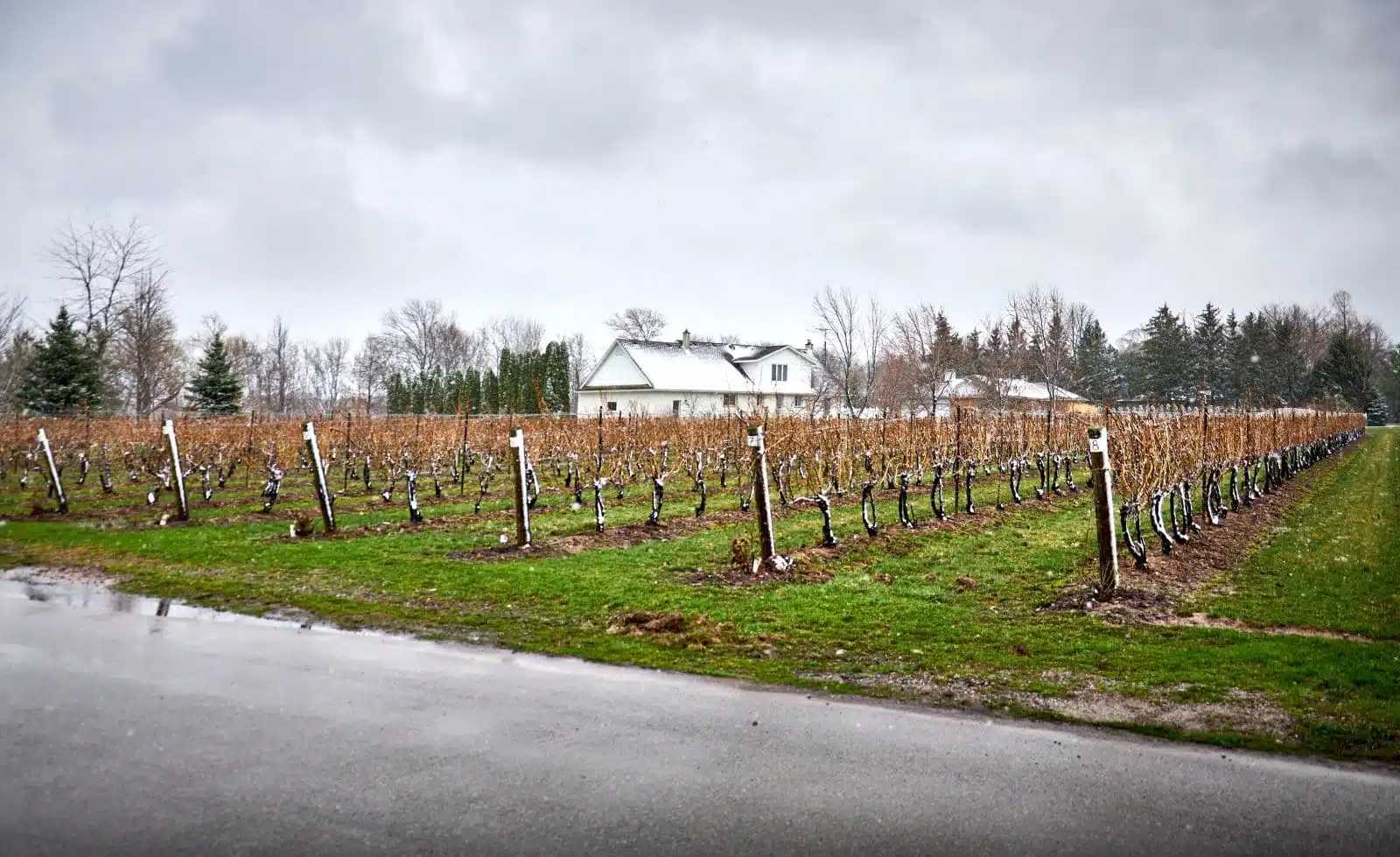
Image Credit: Shutterstock / Alena Charykova
The Niagara Peninsula, located in Ontario, Canada, is a region where cool climate viticulture and sustainability go hand in hand. The unique terrain of the Niagara Peninsula, influenced by the Great Lakes and the Niagara Escarpment, creates ideal conditions for a range of grape varieties. Wineries in this region are committed to sustainable practices, focusing on preserving the natural beauty and resources of the area. A wine tour in the Niagara Peninsula offers a chance to taste exceptional Canadian wines and learn about the innovative methods used sustainably to produce them.
Insider’s Tip
Explore the Icewine vineyards, which produce one of Canada’s most famous wine exports.
When to Travel
Summer and early fall are ideal for visiting, with the added bonus of the Niagara Falls nearby.
How to Get There
The Niagara Peninsula is about a 90-minute drive from Toronto.
11. Margaret River, Australia
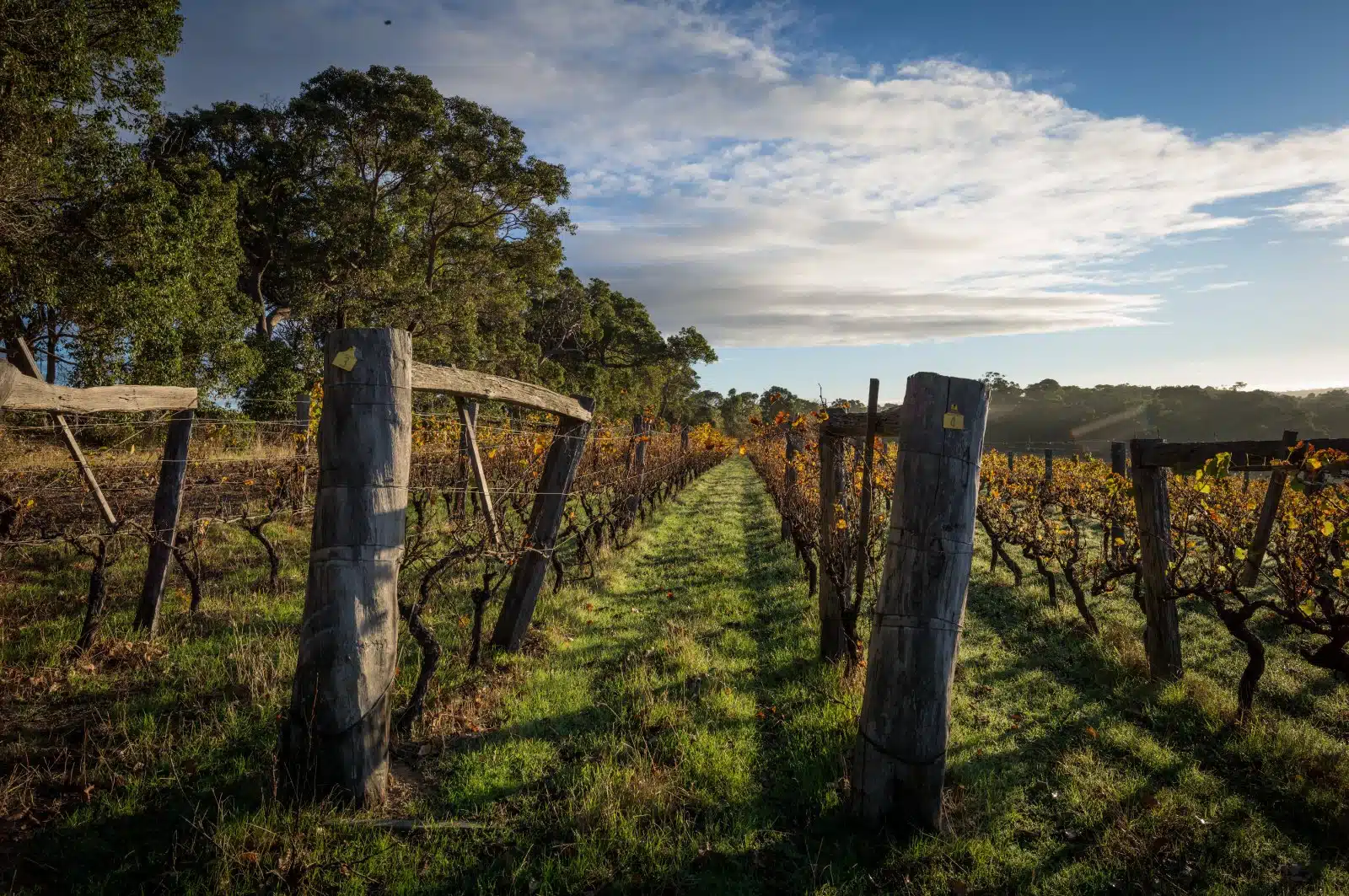
Image Credit: Shutterstock / Janelle Lugge
Margaret River, located in Western Australia, is a wine region that exemplifies environmental stewardship. Known for its premium Cabernet Sauvignon and Chardonnay, the region is home to wineries deeply committed to sustainable viticulture. These vineyards often employ organic and biodynamic practices, focusing on preserving the region’s unique biodiversity and soil health. A wine tour in Margaret River is as much about savoring exquisite wines as it is about understanding the importance of sustainable practices in preserving the region’s natural beauty.
Insider’s Tip
Explore the region’s unique limestone caves and stunning coastal walks for a complete Margaret River experience.
When to Travel
Visit during the harvest season from March to April for the most dynamic vineyard experience.
How to Get There
Margaret River is a 3-hour drive from Perth, Western Australia.
12. Loire Valley, France
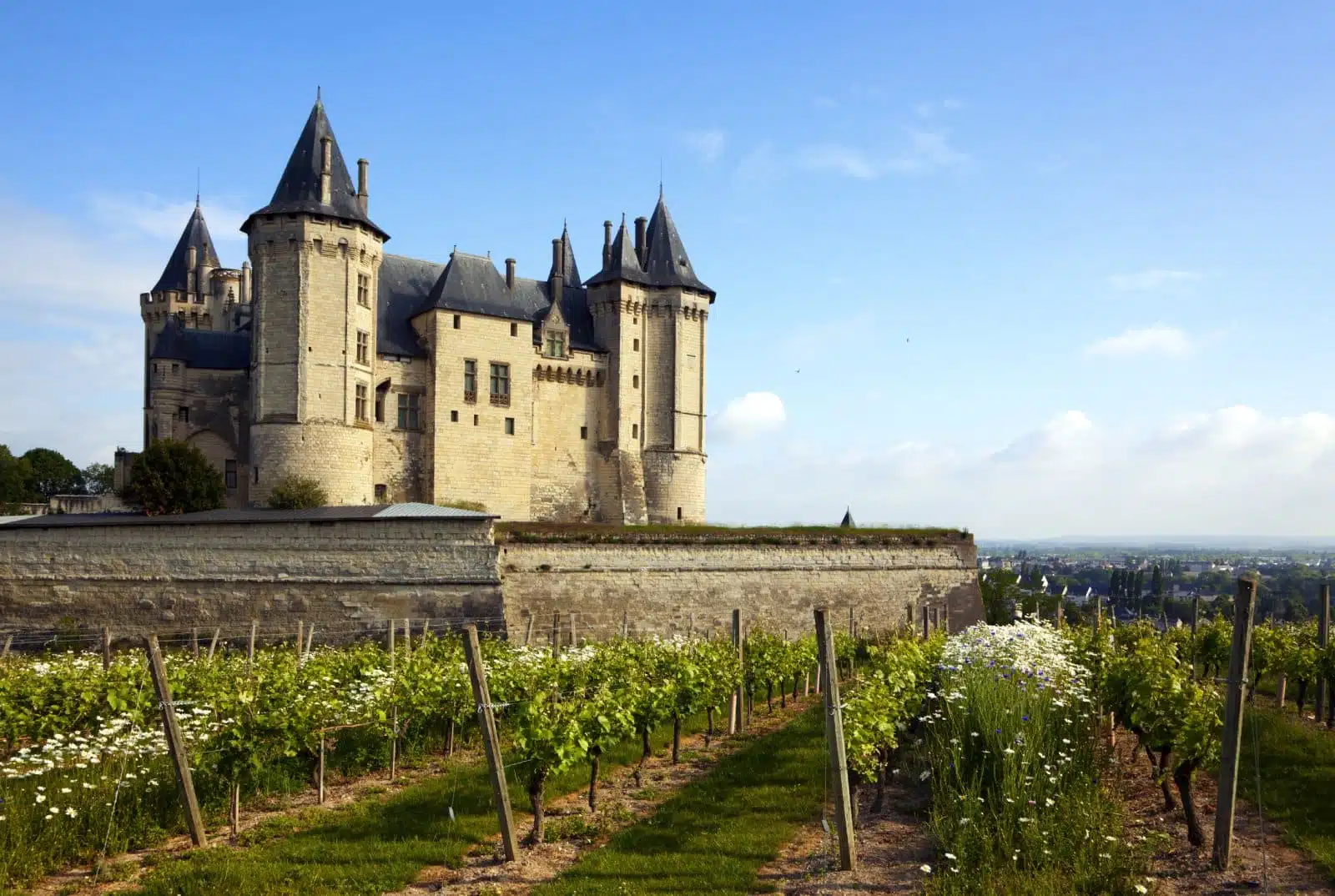
Image Credit: Shutterstock / Oliver Hoffmann
The Loire Valley, often referred to as the Garden of France, is a region where producing eco-friendly wines is as important as preserving its historic châteaux and picturesque landscapes. The vineyards of the Loire Valley are known for their diverse range of wines, including crisp Sauvignon Blancs and elegant reds, all produced with a commitment to sustainability. A sustainable wine tour in the Loire Valley allows one to explore historic estates, taste exceptional wines, and learn about the region’s dedication to eco-conscious winemaking.
Insider’s Tip
Combine wine tasting with a visit to one of the many historic châteaux in the region.
When to Travel
Late spring to early fall is ideal for pleasant weather and the opportunity to see the vineyards in full bloom.
How to Get There
The Loire Valley is a 2-hour train ride from Paris.
13. Rheingau, Germany
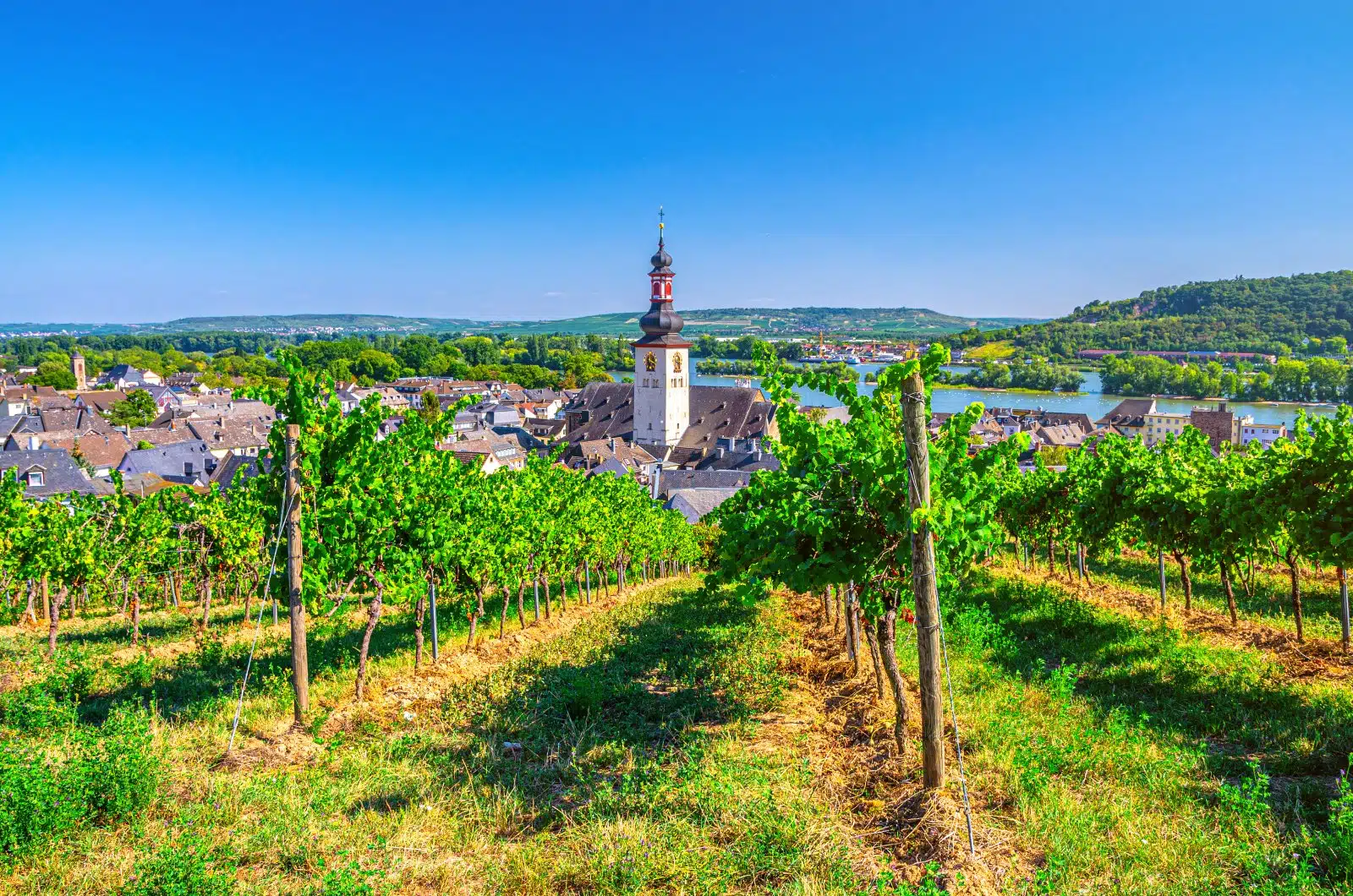
Image Credit: Shutterstock / Aliaksandr Antanovich
Rheingau, Germany, nestled along the Rhine River, is a region steeped in winemaking history and renowned for its Riesling. The vineyards, perched on sun-drenched slopes, demonstrate viticulture, with many adopting organic and biodynamic practices. The region’s winemakers are deeply committed to preserving the unique terroir that imparts distinct wine characteristics. A tour through Rheingau is an educational journey into the heart of German winemaking, where tradition harmonizes with environmental stewardship. The picturesque landscape, with its terraced vineyards and historic estates, adds to the charm of the wine-tasting experience. Rheingau’s commitment to sustainability is evident in every aspect of its winemaking, from the careful cultivation of grapes to the energy-efficient operations of its wineries.
Insider’s Tip
Take a river cruise along the Rhine to enjoy stunning views of the vineyards from a different perspective.
When to Travel
The best time to visit is from May to October, with the grape harvest typically in September.
How To Get There
Rheingau is easily accessible by train from Frankfurt.
14. Okanagan Valley, Canada
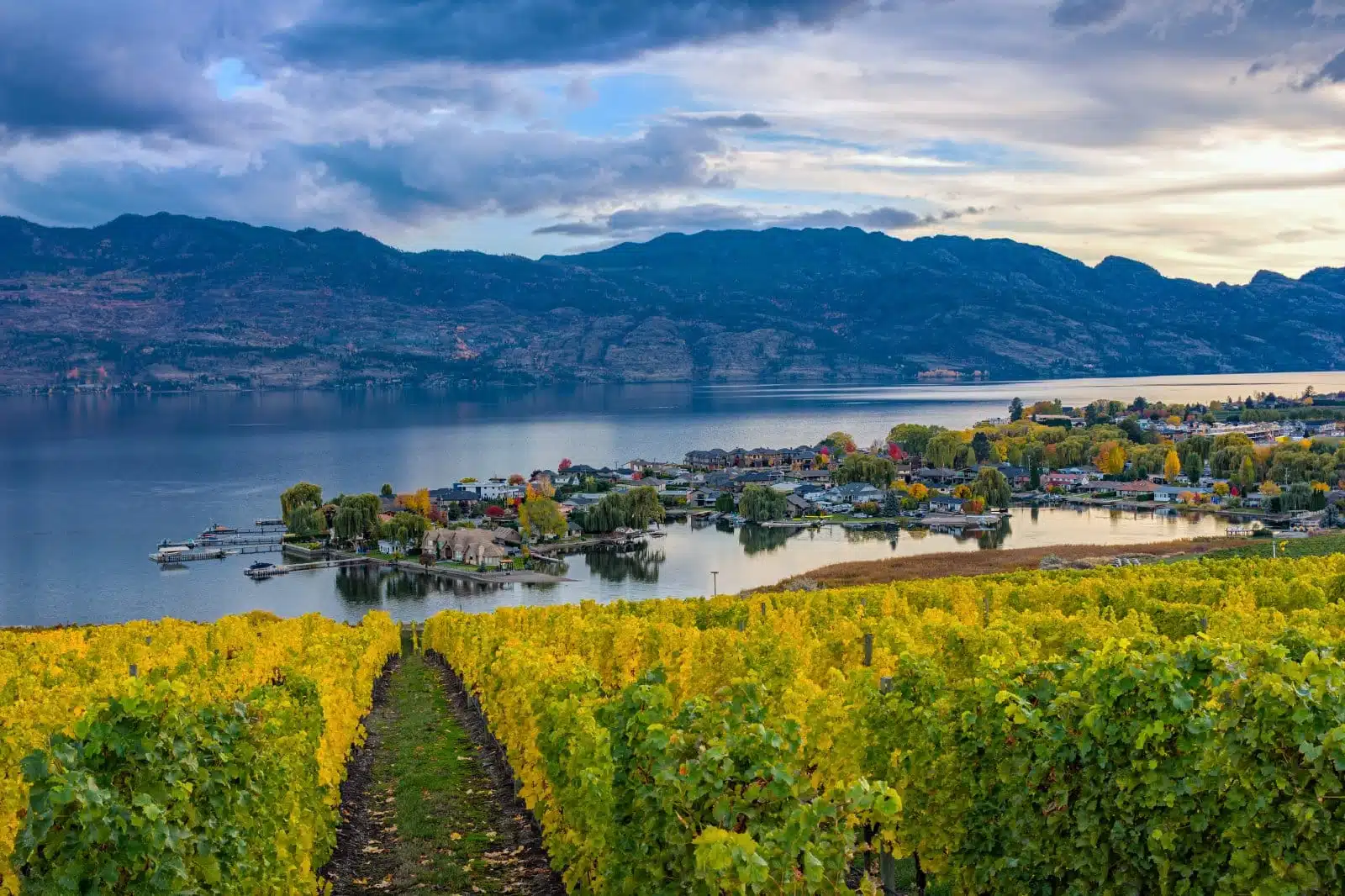
Image Credit: Shutterstock / Stan Jones
Okanagan Valley, in British Columbia, Canada, is a wine region that has embraced sustainability with open arms. Known for its diverse microclimates and a wide range of varietals, the valley’s wineries are at the forefront of eco-friendly practices. This includes water conservation, the use of renewable energy, and organic farming methods. The region’s stunning natural beauty, with its lakes, mountains, and forests, provides a picturesque backdrop for wine tours. Visitors can explore the unique terroir that contributes to the distinct flavors of Okanagan wines. The commitment to sustainability here goes beyond the vineyards, with many wineries also focusing on building sustainable communities and preserving the natural landscape for future generations.
Insider’s Tip
Visit during the fall to experience the vibrant colors of the vineyards and partake in harvest events.
When to Travel
Summer and early fall are the best times to visit for warm weather and vineyard activities.
How To Get There
The Okanagan Valley is about a 5-hour drive from Vancouver or a short flight to Kelowna.
15. Finger Lakes, New York
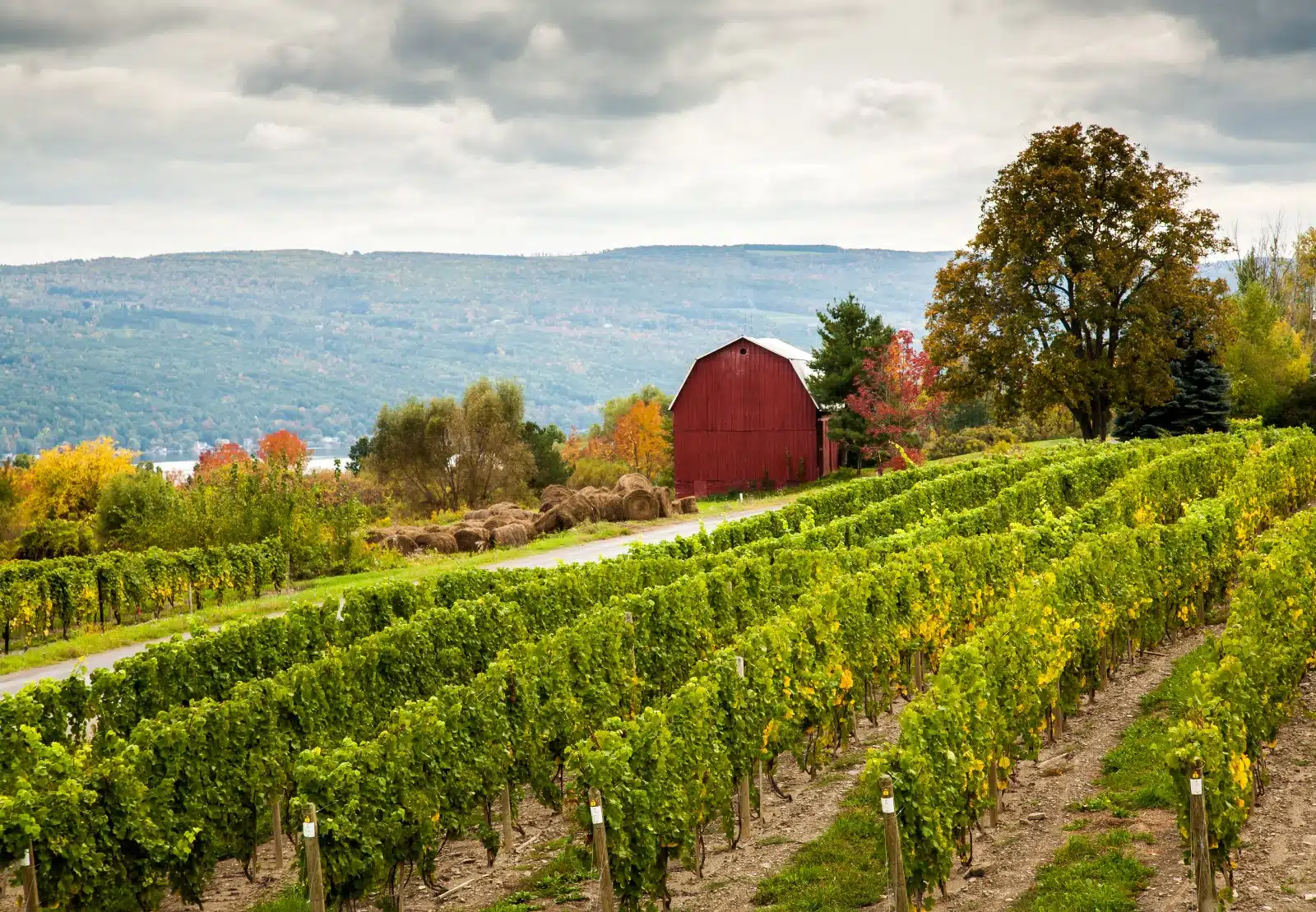
Image Credit: Shutterstock / Bob Pool
The Finger Lakes region in New York State is emerging as a leader in sustainable viticulture in the United States. With its deep glacial lakes and fertile soil, the region is ideal for producing wines, particularly Rieslings and cool-climate varietals. Wineries in the Finger Lakes increasingly adopt sustainable practices, focusing on soil health, water conservation, and biodiversity. The region’s commitment to sustainability extends to its community involvement and educational initiatives, making it a model for eco-friendly wine production. The natural beauty of the Finger Lakes, with its rolling hills and picturesque waterways, enhances the wine-tasting experience, making it a must-visit destination for those interested in sustainable winemaking.
Insider’s Tip
Explore the local farm-to-table restaurants that often feature wines from the region, enhancing your culinary experience with locally sourced ingredients.
When to Travel
Late spring to early fall is ideal for visiting, with the added bonus of witnessing the spectacular fall foliage.
How To Get There
The Finger Lakes region is about a 4-5 hour drive from New York City or a short flight to Rochester or Syracuse, followed by a scenic drive.
The Bottom Line
Sustainable wine tours offer more than just tastings; they provide a deeper appreciation for the art of winemaking and its relationship with the environment. As you explore these vineyards, you become part of a movement that values the quality of the wine and the health of the planet. Remember, each glass of wine reflects the land it comes from and the care it’s given. Drink responsibly, not just in quantity, but in the awareness of its origin.
When selecting a wine tour, look for organic, biodynamic, or sustainable certifications. These labels indicate a winery’s commitment to environmentally friendly practices. Your choice to support such vineyards contributes to preserving these beautiful wine regions for future generations.
More From The Green Voyage
12 Best Practices for Sustainable Travel in 2024 – How to Travel With Minimal Environmental Impact
Unlocking Hotel Perks – A Traveler’s Guide to Maximizing Hotel Reward Programs for Optimal Benefits
Travel Hacks for Frequent Flyers – 6 Tips and Tricks to Make the Best of Air Travel
The post 15 Sustainable Wine Tours Around the World 2024 first appeared on The Green Voyage.
Featured Image Credit: Shutterstock / Lukasz Szwaj.
For transparency, this content was partly developed with AI assistance and carefully curated by an experienced editor to be informative and ensure accuracy.
Tips for Trip Success
Book Your Flight
Find an inexpensive flight by using Kayak, a favorite of ours because it regularly returns less expensive flight options from a variety of airlines.
Book Your Hotel or Special Accommodation
We are big fans of Booking.com. We like their review system and photos. If we want to see more reviews and additional booking options, we go to Expedia.
You Need Travel Insurance!
Good travel insurance means having total peace of mind. Travel insurance protects you when your medical insurance often will not and better than what you get from your credit card. It will provide comprehensive coverage should you need medical treatment or return to the United States, compensation for trip interruption, baggage loss, and other situations.Find the Perfect Insurance Plan for Your Trip
